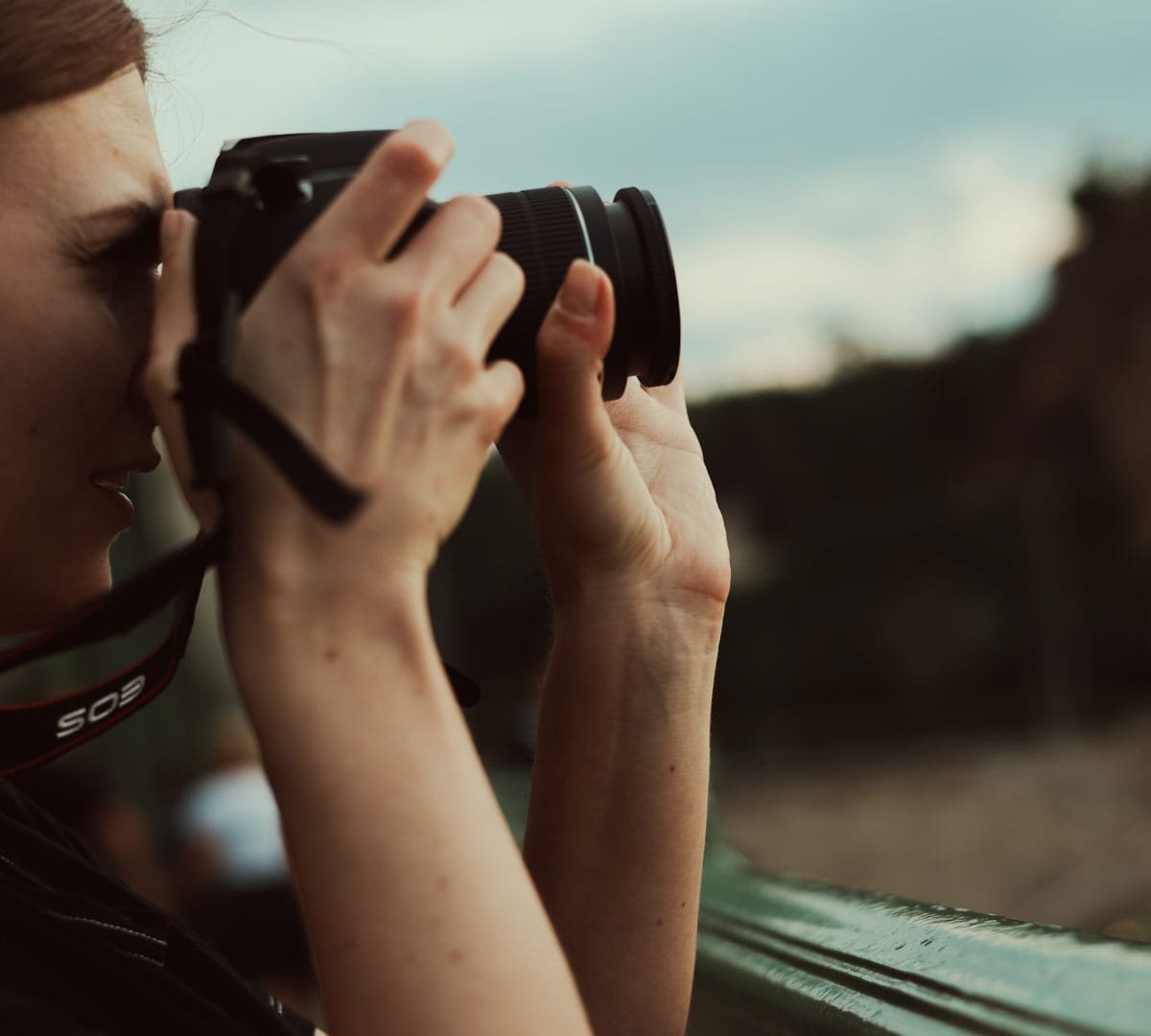Leveraging Your Brand in Photography: From Business Cards to Online Presence
The Photography Brand Article Series:
"Understanding Branding in Photography: A Comprehensive Guide": Understand what exactly branding is and what that means for your photography business. This guide covers branding components, expert insights, and practical strategies for photographers.
"Creating Your Photography Brand: A Step-by-Step Action Guide": A comprehensive guide to building a robust brand for your photography business. This article lays out actionable steps and reflections, covering everything from brand foundations to strategies for visibility.
(Currently Reading) "Leveraging Your Brand in Photography: From Business Cards to Online Presence": Learn how to harness your brand for your photography business. From logo design to business cards to online presence, this guide offers actionable insights for photographers.
Why Branding Matters in Photography
Photography is more than just capturing moments—it's about telling a story. And just like any storyteller, photographers need a voice. This is where branding steps in. In this digital age, where images are everywhere, branding helps photographers stand out and connect with their audience. Let's dive into why it's crucial and how you can use branding to promote your business and strengthen your reputation.
The Digital Shift and Branding
The rise of the internet and social media has changed how we view and share photos. It's not enough to just take great shots; photographers need to be recognizable and memorable. In this vast online space, branding is the tool that lets your work and your story shine through.
At the same time branding is something that many photographers and creatives can easily understand. Think of your favorite creatives, you can probably recognize their work as theirs by their style, whether it be their color grading or composition or subject or the combination of these. In the same way, understanding and employing your brand intentionally allows your business to leverage its own recognizable style and personality. Think of some of the big businesses that you engage with; you can probably recognize their messaging or even their design as "that's so them".
Why Branding is a Must for Photographers
Trust and Credibility: When someone hires a photographer, they're inviting them into personal moments. Whether it's a wedding, a newborn shoot, or a personal project, they're trusting the photographer with their story. A clear personal brand shows clients who you are and what you stand for, making them more comfortable and confident in choosing you.
Standing Out in a Crowded Field: There are countless talented photographers out there. A strong personal brand helps you stand out. It tells potential clients not just who you are, but why they should choose you. Think of it as your unique signature in a world of many.
Connecting with the Right Clients: Not all clients are a good fit for every photographer. By clearly communicating your style, values, and vision through your branding, you'll attract clients who are looking for—and will appreciate—what you offer. This leads to more rewarding projects and better working relationships.
Read our full guide on “Understanding Branding in Photography”
Building Your Photography Brand
Branding isn't just about a logo or a catchy tagline. It's a combination of your work, your values, your interactions with clients, and how you present yourself online and offline. In the upcoming sections, we'll give you practical tips on how to create a brand that's genuinely you and resonates with your ideal clients. We'll tackle everything from consistent messaging and visuals to how to engage with your audience authentically.
Read our full guide on "Creating Your Photography Brand: A Step-by-Step Action Guide"
Building the Foundations of a Robust Photography Brand
While the essence of photography revolves around capturing moments, the art of branding in this space is about encapsulating the ethos, values, and unique perspectives of the photographer or studio. Just as each photograph narrates a tale, your brand should echo your journey, passion, and commitment to the craft. Let's unravel the pivotal elements that weave the fabric of a compelling photography brand:
Consistency in Messaging and Visuals: A brand is as strong as its most inconsistent part. Every interaction, from your website to your social media posts or even the emails you send, should reflect a harmonized voice and visual theme. This unified front not only aids in brand recall but also cements trust among your clientele.
Tip: Consider crafting a brand style guide. It serves as a compass, detailing nuances from brand colors and fonts to your brand's tone and voice, ensuring that every touchpoint with clients is distinctively 'you'.
Authenticity and Personal Touch: In the realm of photography branding, authenticity isn't just a buzzword—it's the cornerstone. Your brand should be a mirror to your true self, your values, and your journey. Remember, clients gravitate towards genuine brands—they seek to connect with the person behind the lens, not just a business entity.
Tip: Share your journey. Whether it's a challenging photoshoot or a source of inspiration, offering a glimpse behind the curtain can foster deeper connections with your audience.
Emotion and Connection: A powerful photograph can stir souls, and your brand should aspire to do the same. It's about creating a narrative that not only showcases your work but also resonates emotionally with your audience. When clients feel emotionally tethered to your brand, they transform from mere customers to brand ambassadors.
Tip: Engage in storytelling. Share the tales behind your photographs, the highs, the lows, and the in-betweens. Such narratives make your brand more relatable and memorable.
Distinctiveness: The photography landscape is vast, with myriad talents. Your branding should spotlight what makes you, or your studio, unique. It's about amplifying your voice amidst the chorus and signaling to clients why your perspective is unparalleled.
Tip: Pinpoint your unique selling proposition (USP). Whether it's a signature style, a penchant for a particular genre, or a unique service offering, ensure it's prominent in your branding endeavors.
Active Engagement: Branding is a dialogue, not a monologue. It's vital to foster interactions, be receptive to feedback, and cultivate a community around your brand. Such engagements not only bolster brand loyalty but also provide a goldmine of insights about client preferences and expectations.
Tip: Foster community engagements. Regular interactive sessions, photo challenges, or feedback loops on platforms like Instagram can amplify engagement and foster a sense of belonging among your followers.
A potent photography brand transcends visual aesthetics. It's a symphony of your ethos, passion, and vision, harmonized to resonate with your audience. By meticulously cultivating these elements, your brand can achieve not just recognition but reverence in your space.
Crafting a Distinctive Logo for Your Photography Brand
At the heart of every successful brand lies a compelling logo. It’s the visual signature that encapsulates your essence, ethos, and expertise as a photographer or photography studio. A logo is more than just a design; it's a declaration of your brand’s identity. Let’s navigate the intricacies of designing a logo that stands out and resonates with your audience.
A. Insights and Instruments for Logo Creation
Decoding the Psychology of Colors and Typography: Every hue and font has a story to tell. Colors aren’t just about aesthetics; they're powerful communicators. For instance, while warm shades like red might evoke passion and vibrancy, cooler tones like teal can project serenity and trustworthiness. Similarly, fonts can amplify your brand message. A classic serif font might paint a picture of elegance and tradition, whereas a sans-serif could suggest a more contemporary, sleek vibe. When selecting colors and fonts, delve deep into the emotions and narratives you wish to convey through your brand.
Pro Tip: Conduct a mini-survey. Share a few color and font combinations with peers or potential clients. Their feedback can offer invaluable insights into the general perception and appeal of your choices.
Exploring Design Tools: From Freemium to Premium: Crafting a logo doesn’t always warrant a professional designer's touch, although it can be beneficial. Numerous online tools, both free and paid, can empower you to design a logo that aligns with your vision. Platforms like Canva offer user-friendly interfaces, while tools like Adobe Illustrator cater to more advanced design needs. When selecting a tool, consider its ease of use, flexibility, and the range of design assets it offers. Be careful to consider the legal and intellectual property options you have when using a tool; some free tools might have clauses that prevent you from being able to trademark designs down the road - this could be especially critical for core brand pieces like logos.
Pro Tip: Start with a rough sketch. Even if it’s just a doodle on paper, having a basic concept can guide your digital design process and make it more focused.
Making the Choice: Hiring a Designer vs. Going DIY: The route you choose for logo creation hinges on multiple factors: your budget, the intricacy of the design you envision, and the weightage you give to originality. Let's weigh the advantages and potential challenges of both approaches:
Engaging a Professional Designer:
Advantages:
Leverage expert insight and creativity.
Obtain a one-of-a-kind, tailored design.
Save time and avoid potential design pitfalls.
Challenges:
Heavier on the pocket.
Might involve multiple iterations to align the designer's interpretation with your vision.
DIY Approach:
Advantages:
Economical, especially for startups or individual photographers.
Complete creative autonomy.
Perfect for straightforward, minimalist designs.
Challenges:
The outcome might lack a professional touch if design isn't your forte.
Can be time-intensive.
Remember, your logo is the visual ambassador of your brand. Whether it's embossed on a business card, featured on your website, or watermarked on your photographs, it's the first impression you make. Invest time, thought, and effort to ensure it not only represents you but also captivates your audience.
B. Crafting a Versatile Logo: Adaptability is Key
In the dynamic realm of photography, a logo isn't just a static emblem. It's an ever-adapting symbol that interacts with diverse audiences across various platforms. To truly make a mark, your logo must be as versatile as it is visually appealing. Let's delve into ensuring your logo’s adaptability without compromising its core essence.
Oftentimes logos consist of a core mark that is incorporated into multiple forms or logo variations. It is important that these variations, while different, clearly belong to each other. Balance having as few variations as possible while having the basic types and situations covered.
Read more: “6 Logo Variations Your Brand Needs To Be Versatile” by Logo.com
Fluidity Across Platforms: As a photographer or studio, your brand presence permeates multiple channels. From the elegance of a printed portfolio to the pixels of a website, or the subtle watermark on an image, your logo needs to fit seamlessly. This demands a logo design that can transition smoothly between the tactile world of print and the digital realm.
Pro Tip: Mockup tests are invaluable. Before finalizing your logo, visualize it on mockups of business cards, websites, and as watermarks. This allows you to foresee any potential adaptability issues and address them proactively.
Mastering the Scale Game: Maintaining Impact from Billboards to Thumbnails: The true test of a logo’s design lies in its scalability. Whether it's gracing a massive billboard or nestling as a diminutive icon on a website tab, the essence and readability should remain uncompromised. While intricate designs might look stunning on larger canvases, they risk becoming indecipherable when scaled down. The key lies in striking a balance: a design that's sufficiently detailed to be distinctive, yet simple enough to be universally legible.
Pro Tip: Vector designs are your best bet. Unlike raster images that can pixelate when resized, vectors maintain their clarity regardless of scale. If you're working with a designer, ensure they provide your logo in vector format for maximum versatility.
In essence, versatility in logo design isn't just about adaptability; it's about ensuring that your brand's visual identity remains potent and effective, irrespective of where or how it's displayed. By prioritizing adaptability from the outset, you lay the groundwork for a logo that not only captures attention but also adapts gracefully to any context.
Crafting Distinctive Photography Business Cards for Your Brand
In the vast expanse of the digital realm, there’s something enduringly impactful about the tactile experience of a business card. Especially in the world of photography, where visuals and impressions matter immensely, a well-designed business card can be the subtle difference between being remembered or forgotten. Let's delve into the art and strategy behind creating business cards that effectively encapsulate your brand.
A. The Undiminished Significance and Crafting Best Practices
Business Cards in the 21st Century: More Relevant Than You Think: In an era dominated by digital interactions, one could easily dismiss business cards as outdated. However, their significance has evolved rather than diminished:
Tangible Brand Essence: While digital assets are easily scrolled past, a business card is a physical manifestation of your brand, serving as a constant reminder on a client's desk or in their wallet.
Instantaneous Brand Recall: After networking events or client meetings, a distinctive business card ensures you stand out in a sea of faces and names.
A Mark of Professionalism: The effort invested in designing a thoughtful business card showcases your commitment to your craft and attention to detail.
Pro Tip: Consider the tactile feel of your card. The weight, texture, and finish can greatly influence perceptions. A matte finish might convey elegance, while a glossy card could denote vibrancy.
Curating Content: What to Include: In the constrained space of a business card, every inch and word matters. Here’s a distilled list of essentials:
Your Name: This is your primary identifier. Opt for a font and size that’s easily legible and stands out.
Your Craft's Essence: Specify your photography genre, be it candid wedding shots, evocative landscapes, or dynamic event photography. This gives immediate clarity on your expertise.
Channels of Communication: Beyond just your phone number and email, consider adding a QR code that leads to your portfolio. This integrates the physical with the digital, offering potential clients an immediate visual journey through your work.
Social Footprints: If platforms like Instagram or Pinterest are where you showcase your latest work or gather a following, make them a part of your card. But ensure it doesn’t clutter the design.
Remember, while business cards are small, their impact can be substantial. They’re not just about conveying information but are miniature ambassadors of your brand's essence. In the world of photography, where every detail counts, a meticulously designed business card can be your silent yet powerful brand advocate.
B. Innovative Business Card Designs: Making an Unforgettable First Impression
In the visually-rich domain of photography, the design of your business card can be a testament to your creativity and attention to detail. Here are some inventive ideas to ensure your business card doesn’t just convey information but also showcases your unique style and brand:
Exploring the Canvas: Beyond the Rectangular Norm:The traditional rectangular business card is tried and tested, but stepping outside this box can set you apart:
Shapes and Silhouettes: Think squares, ovals, or even a silhouette that represents your brand. For instance, a wedding photographer might opt for a heart or ring shape, while a wildlife photographer might lean toward an animal silhouette.
Textures that Speak: Different textures evoke different emotions. A smooth matte finish might convey sophistication, while a rugged, recycled paper texture could resonate with eco-conscious brands or nature photographers.
Pro Tip: If opting for unconventional shapes, always test the card’s practicality. It should fit comfortably in standard wallets or cardholders. Also consider color contrast, image quality (if you include an image), and whether the card fades or decolors.
Integrating Your Artistry:
Signature Snap: Incorporate a signature photograph that encapsulates your style, but ensure it doesn't overshadow the primary information. Consider using it as a subtle background or as a vibrant image on the reverse side.
Iconic Elements: Use iconic photography symbols subtly, like a lens flare, a camera silhouette, or even aperture blades, to integrate your craft into the design.
Marrying Tradition with Tech:
QR Codes: A compact QR code can be your gateway to the digital world. When scanned, it could direct clients to a slideshow of your latest work, a behind-the-scenes video, or a special promotional offer.
Pro Tip: Always include a small instruction or prompt near the QR code. It encourages clients to scan and engage.
Your business card is a reflection of your brand's fusion of art and business. By blending time-tested design principles with innovative touches, you can craft a card that not only shares your contact information but also becomes a memorable piece of your brand story.
Crafting a Stellar Online Hub: The Essentials of a Photography Website
In today's hyper-connected world, your website serves as your digital storefront. It's the platform where your brand, art, and business converge. A well-designed website can be your most potent tool in attracting clients, showcasing your work, and building your brand's narrative. Let's dissect the crucial components that make up an effective photography website.
A. Spotlight on Portfolios: Your Visual Resume
Your portfolio is the visual testament of your expertise, style, and versatility. It's the first stop for most visitors, and hence, it's imperative to get it right.
The Art of Curation:
Selective Showcasing: While it's tempting to display every click, it's pivotal to be selective. Choose shots that best represent your skill set, unique style, and the range of projects you've handled.
Cohesive Organization: Segment your work into intuitive categories—be it based on themes (like landscapes, portraits, events), or by projects. This makes navigation effortless for visitors and lets them dive into what interests them the most. Make sure the work you choose to display is relevant to your services and ideal clientele.
Narrative Through Imagery: Every image has a tale behind it. Use concise captions or short anecdotes to provide context. It could be about the inspiration, the challenges faced, or the emotions captured. Or go above and beyond and include case studies and behind-the-scenes of some of your sessions. This added layer of storytelling enhances engagement and makes your work more relatable. Clients will be able to see themselves in these stories.
Amplifying Trust through Authentic Testimonials:
Voices of Your Clients: Positive feedback from past clients not only builds trust but also offers insights into your professionalism, approach, and results. Showcase these testimonials prominently, and if possible, accompany them with the respective photoshoot images.
Pro Tip: Video testimonials can be even more impactful. Seeing and hearing a satisfied client share their experience can resonate deeply with potential clients.
Behind-the-Scenes: Humanizing Your Brand:
The Process Unveiled: Sharing behind-the-scenes content—be it in the form of photos, videos, or blog posts—can be incredibly engaging. It demystifies the process and showcases the effort and passion that goes into every shot.
Connecting on a Personal Level: This content can also spotlight your personality, work ethics, and approach. It helps in humanizing your brand and forging a deeper connection with visitors.
Your website is more than just a digital portfolio; it's a reflection of your brand's identity, ethos, and values. By ensuring it's well-organized, authentic, and user-friendly, you set the stage for a memorable visitor experience, nudging them closer to becoming loyal clients.
Read our full guide: “Building the Perfect Photography Website in 2023: A Comprehensive Guide”
Just starting out and need a portfolio?
Get up and running sooner with our FREE Squarespace Portfolio Template. Perfect for photographers starting out, this template is perfect for showcasing your work and making a strong first impression.
B. SEO Essentials for Photographers
Why SEO Matters for Photographers: With the internet brimming with talented photographers, SEO (Search Engine Optimization) becomes your tool to ensure that potential clients find your website amidst the crowd. But what exactly is SEO, and why is it pivotal for photographers?
Keyword Research: This is the process of finding out what terms your potential clients type into search engines. Tools like Google Keyword Planner can help you identify these. For example, if you're a wedding photographer based in Seattle, terms like "Seattle wedding photography" might be crucial for your website.
On-Page SEO Techniques: Once you know your keywords, the next step is embedding them into your website. This doesn't just mean within the content. They should be included in meta descriptions, image alt texts, and even your website's URL if possible. The goal is to make it clear to search engines like Google what your website is about. But make sure you include it in a relevant and authentic way.
Local SEO for Regional Photographers: If you offer services in a specific location, make sure search engines know where that is. Mention your service areas on your website, use location-specific keywords, and set up a Google My Business account to appear in local searches.
Enhancing User Experience for SEO: SEO isn't just about keywords. Search engines rank user-friendly websites higher. So, how can you make sure visitors have a smooth experience?
Mobile-Friendly Website Design: Many of your visitors will access your website from their phones or tablets. A responsive design ensures your website looks and works well on all devices.
Clear Website Navigation: Think of your website as a store. Visitors should easily find what they're looking for, be it your portfolio, about page, or contact details. An organized menu and clear website structure can help.
Read More: “Website Navigation Tips: Enhancing User Experience and Improving Site Navigation”
Fast Website Loading Speed: Visitors might leave before even seeing your work if your website takes too long to load. Compress images, reduce the number of plugins, and consider using a high-speed hosting service.
Easy-to-Find Contact Information: If a potential client wants to reach out, they shouldn't have to search high and low. A dedicated contact page, clear call-to-action buttons, and visible contact details can make a world of difference.
SEO is more than just a buzzword. It's a strategic approach to ensure your photography website reaches its intended audience. With the right techniques, you can increase your website's visibility on search engines, attract more visitors, and turn those visitors into clients.
Want a professional website to go with your professional career?
Save time with our Ready-To-Go Strategic Squarespace Template for Photographers, which implements the strategies discussed in this article and more. Elevate your online presence today!
Mastering Social Media Branding in Photography
Harnessing the power of social media platforms is essential for photographers aiming to establish a robust online presence. These platforms not only facilitate showcasing your talent but also enable direct engagement with your target audience, amplifying your brand's voice. This section delves deep into the nuances of branding on key social media channels, ensuring you stand out in a saturated market.
A. Choosing the Right Platforms for Your Brand
Instagram: The Photographer's Canvas
Instagram, with its image-centric format, is a haven for photographers. To capitalize on its potential:
Consistent Engagement: Develop a routine posting schedule, ensuring a constant stream of fresh content to engage your followers.
Harnessing Hashtags Keywords: Dive deep into hashtag keyword research, identifying those most relevant to your niche. Skillfully weave these into your posts to boost visibility. Hashtags used to be a useful strategy, but recent algorithm updates have moved the emphasis to using keywords naturally in the captions.
Interactive Engagement: Cultivate a community by actively engaging with your audience. Respond to their comments, initiate discussions, and host interactive sessions or contests to foster a deeper connection.
Pinterest: Inspiring and Being Inspired
Pinterest is a treasure trove of inspiration. To effectively brand yourself on this platform:
Curate with Care: Design boards that resonate with your photographic style, interspersing your work with related inspirational content.
Optimized Descriptions: Craft engaging pin descriptions infused with pertinent keywords, ensuring your pins reach the right audience.
Consider Your Audience: Pinterest can be a treasure trove for your audience. Does your audience research poses before a shoot, or collect pins as they prepare for their wedding? Posting and curating this type of content can help your audience and give them an opportunity to digitally meet your brand.
LinkedIn: Building Professional Connections
LinkedIn, the hub for professionals, offers photographers an avenue to connect with potential collaborators and clients. To maximize its benefits:
Polished Profiles: Ensure your LinkedIn profile is carefully crafted, spotlighting your expertise, accolades, and photographic journey.
Showcase Your Knowledge: Regularly share articles, insights, or recent work, positioning yourself as a thought leader in the photography realm.
TikTok and YouTube: Diving into Dynamic Content
The world is rapidly gravitating towards dynamic content, making platforms like TikTok and YouTube indispensable. Here's how to shine on these platforms:
Behind-the-Lens Glimpses: Share videos that offer insights into your creative process, from conceptualization to execution. This not only educates but also humanizes your brand.
Authenticity is Key: In a world of filters and edits, authenticity stands out. Embrace your unique voice, style, and personality, creating content that is genuinely 'you'.
By strategically leveraging these platforms, photographers can carve a niche for themselves, ensuring their brand resonates with, and captivates, their target audience.
B. Crafting a Cohesive Digital Presence: Visuals and Messaging
Carving Out a Distinctive Aesthetic: Achieving a recognizable aesthetic across social media platforms is fundamental to building and reinforcing your brand's identity. Here's how you can ensure visual cohesion:
Unified Visual Themes: Commit to a consistent visual palette, encompassing specific colors, filters, and photographic techniques. This ensures that at a glance, any content can be immediately identified as yours.
Strategic Logo Placement: Incorporate your logo or watermark judiciously on your content. This not only asserts ownership but also fortifies your brand's recall value among viewers.
Mastering Brand Voice and Tone: Your brand's voice and tone should be a reflection of its core values, ethos, and the promise you make to your audience:
Tuning into Your Audience: Invest time in truly understanding your target demographic. Grasp their preferences, aspirations, and concerns, and shape your communication to resonate deeply with them.
Curated Content Strategy: Strategically design your content calendar. Whether you're narrating a compelling story or sharing industry insights, ensure every post aligns with, and reinforces, your brand's essence.
Leveraging Engaging Features: Stories and Reels: With the advent of ephemeral content like stories and reels, brands have a unique opportunity to engage with audiences in a more spontaneous and intimate manner:
Exclusive Behind-the-Scenes Peeks: Utilize the transient nature of stories to offer exclusive insights into your work process, building a deeper bond with your audience.
Narrative-Driven Content: Harness the power of storytelling. Share poignant anecdotes from your photography journey, client experiences, or even everyday inspirations. These personal snippets make your brand relatable and memorable.
Expanding Your Brand Beyond Traditional Channels
Every interaction that clients have with your photography brand, be it direct or indirect, molds their perception of you. It's vital to ensure these interactions are not only positive but also consistently echo your brand's essence. Here, we'll delve into overlooked yet impactful touchpoints that can significantly amplify your brand's resonance: Email Campaigns, Thoughtful Packaging, and Tangible Branded Merchandise.
A. Email Campaigns: Bridging Brand and Audience Through Effective Communication
Emails, often overlooked in the realm of branding, serve as a potent tool in fostering and nurturing client relationships. When meticulously crafted, emails can transform from mere digital letters to platforms that amplify your brand, establishing trust, and fostering loyalty. Here's how you can make your email campaigns an embodiment of your brand:
Unified Design and Messaging: An email's design should not only be visually consistent with your brand's aesthetics but should also convey your brand's ethos. From your signature colors and typography to the tone of the content, every element should be a harmonious extension of your brand. Whether you're sending a promotional newsletter or a transactional receipt, the voice and tone should be unmistakably yours.
Content that Resonates: Beyond aesthetics, the content of your email must provide genuine value. Whether it's insightful photography tips, exclusive offers, or heartwarming stories from recent shoots, ensure that your content is both informative and engaging. Remember, every email is an opportunity to deepen the relationship with your audience, so make it count.
Transactional Emails – An Opportunity: Even transactional emails, like booking confirmations or payment receipts, can be optimized to enhance the client experience. Personalize these emails by thanking the client, providing clear next steps, or even suggesting related services. It's these small touches that showcase your brand's dedication to client satisfaction.
Signature as a Brand Ambassador: A well-crafted email signature does more than just provide contact details. Integrating your logo, a brief tagline, or even a call-to-action can transform your signature into a powerful brand touchpoint. It serves as a subtle yet consistent reminder of who you are and what you stand for.
Feedback and Adaptation: Encourage feedback through your emails. Whether it's about your services, the content of the emails, or any other aspect, understanding your clients' perspectives can offer invaluable insights. This not only strengthens the bond with your audience but also allows your brand to evolve, ensuring you're always in tune with their needs.
In essence, every email sent is an impression of your brand in the digital realm. By merging consistent design with impactful content and ensuring every interaction adds value, you can elevate your brand's perception.
B. Crafting Memorable Moments: The Mastery of Packaging and Presentation
The culmination of a photography service doesn't end with the click of the shutter or the final edit on a screen. The delivery of your work is a pivotal moment, bridging the professional relationship into a memorable client experience. By blending thoughtful design with meaningful gestures, you can transform this final step into a lasting brand impression:
Personalized Packaging Experience: Invest in packaging materials that don't just bear your brand's logo, but also reflect its ethos and values. For environmentally-conscious brands, this might mean opting for recycled or sustainable packaging. For those catering to families or mothers, consider packaging that can later serve as a keepsake box for cherished mementos.
Digital Deliverables with a Thoughtful Touch: While many photographers provide digital copies of their work, stand out by considering the client's end-use. Offer images in multiple resolutions, suitable for both print and digital sharing. Additionally, think about including a user-friendly guide on how to get the best prints or how to use images optimally on various social platforms. Such gestures showcase your commitment to client satisfaction beyond the photoshoot.
Value-Infused Extras: Beyond the actual photos, surprise your clients with value-added inclusions. Perhaps a customized calendar featuring select shots or a beautifully designed photo book. Think about the little ways you can enrich their experience - a QR code that leads to an exclusive behind-the-scenes video, or a set of themed photo props for their next DIY shoot.
Evoke Emotion with Personal Touches: A handwritten thank-you note, a small charm or trinket related to the theme of the shoot, or even a discount voucher for their next session can spark joy. These gestures, though small in cost, can leave an indelible mark on the client's heart, fostering loyalty and word-of-mouth referrals.
Feedback Loop: Include a simple feedback card or link. Understanding what they loved about the packaging and presentation or areas they felt lacked can provide actionable insights for continual brand enhancement.
Delivering your photographic work is where your brand's promise, echoed throughout your services, becomes a tangible reality. By meticulously crafting this final journey, you not only elevate your brand's perceived value but also forge deeper, lasting connections with your clients.
C. Physical Reminders: Branded Merchandise That Resonates
In an overwhelmingly digital age, tangible brand reminders can be incredibly impactful. They serve as daily nudges of your brand's existence:
Wearable Art: Design wearable merchandise, such as t-shirts or hats, that seamlessly integrates your signature photography. It's a walking advertisement and a conversation starter.
Year-Round Brand Presence: Curate branded calendars or thematic photo books. They don't just showcase your work but also ensure your brand remains top-of-mind throughout the year.
Taking the time to fine-tune these additional touchpoints can exponentially elevate your brand's perception. It's a testament to your brand's commitment to quality, attention to detail, and dedication to delivering an unparalleled client experience.
Evolving and Refining Your Photography Brand
In the dynamic world of business, resting on laurels is not an option. A brand that resonated yesterday might lose its relevance tomorrow. Thus, it's vital to ensure your brand remains in sync with both industry shifts and your personal growth. Here, we delve into the methodologies for effective brand monitoring and adaptation.
A. The Imperative of Regular Brand Check-ins
Routine introspections are a must to ensure your brand doesn't just fade into the background noise. These aren't mere checklists but processes to ensure you're still capturing the essence of what you stand for:
Holistic Brand Consistency Review:
Digital Footprint Analysis: Examine your online presence, from your main website to each social media post. Are they echoing the same brand narrative?
Printed Materials Scan: From business cards to brochures, ensure they're not just aesthetically pleasing but also in alignment with your brand's voice and tone.
Client Interactions Feedback: Sometimes, the smallest feedback in a casual conversation with a client can offer a wealth of insights. Are you delivering on the brand promise you communicate?
Benchmarking against the Competition:
Gap Analysis: While you shouldn't mimic competitors, understanding what they're doing right can provide actionable insights. What are they offering that you aren't?
Unique Selling Proposition (USP) Re-evaluation: Over time, what was once unique might become commonplace. Is your USP still unique? If not, it's time for a rethink.
Staying Abreast with Industry Movements:
Trend Monitoring: Subscribe to leading photography journals, blogs, or forums. Being aware of industry trends ensures you're not left behind.
Feedback Loops: Regularly seek feedback, not just from clients but also peers. Sometimes, an external perspective can highlight something you might have missed.
Continuous Learning: Photography, like any art, is ever-evolving. Regular workshops or courses can help in updating your skills and understanding of the market.
By diligently conducting these brand check-ins, you ensure that your personal brand remains a true reflection of both your ethos and the changing dynamics of the photography world. It showcases a commitment not just to your craft but also to the clients who trust you to capture their moments.
B. Harnessing the Power of Client Insights and Advocacy
The most honest mirror reflecting the true image of your brand is the feedback from those you serve: your clients. Their insights can be the compass directing your brand's evolution and ensuring its relevance:
Deep Dive with Client Surveys:
Structured Questionnaires: Periodically send out well-crafted surveys to your clients post their engagement with you. Ensure they capture the entirety of their experience — from the initial contact to the final deliverable.
Open-Ended Questions: While rating scales can provide quantitative data, open-ended questions can unearth qualitative insights. Perhaps they loved the little personal touch you added or felt the need for more communication.
Anonymity Assurance: Sometimes, clients might hold back from providing candid feedback for fear of offending. Assure them of anonymity to get genuine responses.
Amplifying Brand Through Testimonials:
Requesting for Endorsements: A satisfied client can be your brand's best ambassador. Politely ask if they would be willing to provide a testimonial. A brief video or a written testimonial with their photograph can lend authenticity.
Strategic Placement: Once you have these testimonials, they shouldn't be buried deep in your website. Place them prominently, perhaps on the homepage or a dedicated section, accentuated with some of your best works.
Staying Attuned to Social Media Resonance:
Active Monitoring: Set up notifications for your brand mentions across platforms. This ensures you're in the loop, be it praise or criticism.
Engagement with Grace: Every comment, be it positive or negative, deserves acknowledgment. A simple 'Thank You' can amplify positive feedback, while addressing grievances can turn a dissatisfied client into a brand advocate.
Valuable Insights Extraction: Beyond direct feedback, look for patterns. Are people particularly fond of a specific style you adopt? Or is there a recurrent suggestion coming up? These can guide future strategies.
By actively seeking, analyzing, and acting on client feedback, you fine-tune your brand and demonstrate a commitment to continuous improvement. It signals to your clientele that their voice matters, fostering loyalty and trust.
C. Navigating the Dynamic Landscape: Embracing Change while Retaining Essence
In the fast-paced world of photography, where trends evolve and tastes shift, ensuring your brand remains in the limelight requires a delicate balance between adapting and staying true to your roots:
Continuous Learning and Trend Adaptation:
Industry Pulse: Regularly attend workshops, webinars, and conferences. This hones your skills and exposes you to contemporary trends and techniques.
Client Preferences: While staying updated with global trends is crucial, it's equally important to understand the changing preferences of your clientele. Their tastes might evolve, and being in sync ensures your offerings remain attractive.
Reflecting Your Evolving Artistry:
Showcasing Growth: As you mature in your craft, your portfolio should echo that evolution. Regularly update your showcased works, letting potential clients see your breadth and depth.
Brand Evolution: If your style takes a new direction or you specialize in a new photography niche, consider subtle rebranding. This could be a logo tweak, a website redesign, or even a shift in your brand's voice and messaging.
Maintaining Brand Integrity Amidst Change:
Core Brand Pillars: While flexibility is vital, your brand should have certain non-negotiables – elements that are the essence of your brand. This might be a specific color palette, a particular tone in messaging, or even specific values you uphold.
Documented Flexibility: Your brand guidelines shouldn't be rigid. Instead, they should outline the core elements while providing room for evolution. This ensures consistency even as you adapt.
Embracing change doesn't mean diluting your brand; it means growing and evolving while ensuring that the essence remains intact. By proactively adapting to market trends and your personal artistic journey, your brand will remain relevant and resonate deeply with your audience.
Conclusion: Elevate Your Photography Business Through Branding
Your brand transcends beyond mere graphical elements or memorable slogans. It's an earnest pledge to your clientele—a solemn vow that underlines your commitment to unparalleled quality, individuality, and the exceptional experiences you offer. This brand, this promise, is the cornerstone of your professional journey and dictates the trajectory of your success in the world of photography.
A. Understanding the Resounding Impact of a Robust Brand
The imprint of a meticulously curated personal brand is indelible. It's an asset that, when nurtured, can yield exponential returns throughout your career. The enduring advantages of a powerful brand:
Forging Trust and Establishing Credibility
Carving Out a Distinct Identity
Enhanced Value Proposition and Pricing Autonomy
Your brand is more than just a representation—it's a living entity that evolves with your journey, mirroring your growth, aspirations, and the value you bring to the table. By investing in and nurturing your brand, you're not just making a statement; you're crafting a legacy in the realm of photography.
B. Nurturing Brand Integrity Through Every Client Engagement
The essence of your brand lies in the promise you've forged with your clientele. It's a pact that pledges unparalleled quality, undivided attention, and an unwavering commitment to delivering exceptional results. Thus, ensuring that every interaction embodies this promise is pivotal.
End-to-End Consistency in Client Encounters:
A potential client's perception of your brand begins long before they commission a project. From the initial exploration of your online presence to the closing handshake after a job well done, every touchpoint should be a testament to your brand's ethos and caliber. This consistency doesn't merely reinforce trust; it engrains your brand's essence in their memory, ensuring you're their first choice, time and again.
Cultivating Rich and Enduring Client Bonds:
Beyond the aesthetics and visuals, your brand is a tapestry of emotions, experiences, and memories. It's the human touch, the understanding nods, and the attentive ear that sets your brand apart. By forging deep, empathetic relationships with your clients, you're creating more than just business transactions; you're crafting cherished memories. Such profound connections bolster client loyalty and transform them into brand ambassadors, championing your services to peers and acquaintances.
Unwavering Dedication to Excellence:
In the realm of photography, your brand's credibility hinges on the promise of consistent quality. It's non-negotiable. By ensuring that every piece of work, irrespective of scale or client, aligns with your brand's high standards, you're making a clear statement: that your brand is synonymous with excellence. This unwavering commitment amplifies your brand's allure and reinforces its standing as a benchmark in the industry.
C. Charting the Path of Brand Evolution
In the ever-evolving world of photography, standing still is akin to moving backward. The essence of a brand lies in its ability to adapt, grow, and resonate in the changing tides, while firmly anchoring its foundational values. Here's how to keep your brand pulsating with vibrancy:
Embracing Change as a Catalyst
Stay Curious, Stay Relevant
Unwavering Core, Fluid Boundaries
Your brand, in the world of photography, is more than just an aesthetic or a tagline. It's a symphony of your experiences, values, and promises – a narrative that tells your audience what to expect and why you matter. While logos, websites, and social media are the instruments, the true music lies in the experience, the emotions, and the memories you curate for your clientele. As you progress in your photographic journey, let your brand be both your compass and your beacon, guiding you towards horizons of success.
Additional Resources and Tools
Embarking on your personal branding journey in photography is a formidable task, but with the right tools and resources, it becomes a rewarding expedition. To solidify your brand's presence and navigate the intricacies of the photography world, here's a curated list of tools and insightful articles to guide and inspire you.
A. Must-Have Design Tools and Platforms Tailored for Photographers:
Adobe Creative Cloud: This comprehensive suite, which includes stalwarts like Photoshop and Illustrator, is indispensable for crafting top-tier logos, graphics, and other essential brand elements.
Canva: With its intuitive interface, Canva is perfect for photographers keen on designing everything from business cards to compelling social media graphics.
Squarespace: Renowned for its sleek templates, Squarespace provides an intuitive platform for photographers keen on showcasing their work with panache.
B. Valuable Articles for Deepening Your Brand Insight:
"Creating Your Photography Brand: A Step-by-Step Action Guide": A comprehensive guide to building a robust brand for your photography business. This article lays out actionable steps and reflections, covering everything from brand foundations to strategies for visibility.
"Understanding Branding in Photography: A Comprehensive Guide": Understand what exactly branding is and what that means for your photography business. This guide covers branding components, expert insights, and practical strategies for photographers.
"How to Become a Photographer: Steps to Kickstart Your Career and Become a Professional Photographer": Embark on an immersive journey into the diverse realms of photography. From mastering technicalities to navigating the business intricacies, this article is your comprehensive roadmap.
"Building the Perfect Photography Website in 2023: A Comprehensive Guide": Delve deep into the world of digital portfolios. This guide, encompassing SEO strategies to design nuances, is your blueprint for online success.
"10 Unique Ways to Utilize Your Personal Brand Photos": From conventional social media posts to avant-garde applications like augmented reality, discover innovative ways to maximize your brand photos' impact.
"The Power of Branding in a Crowded Digital Marketplace": Ascertain the indomitable power of branding in the digital realm, understanding its role in carving a distinct niche amidst competition.
"How to Create Your Personal Brand Style Guide and Enhance Your Brand Image": Craft a compelling style guide to bolster your brand's image. This article serves as your meticulous guide, ensuring your brand resonates consistently across platforms.
Frequently Asked Questions (FAQs)
1. Why is branding essential in photography?
Branding allows photographers to distinguish themselves in a competitive market, build trust with clients, and attract the right audience that aligns with their unique style and values.
2. How does a logo contribute to my brand?
A logo is a visual representation of your brand. It encapsulates your brand's essence, making it recognizable and memorable. The right choice of colors, typography, and design can evoke emotions and convey your brand's personality.
3. Are business cards still relevant in the digital age?
Absolutely. While digital platforms dominate, business cards offer a tangible connection and leave a lasting impression. They can effectively communicate your brand when designed creatively.
4. What's the importance of consistency in branding?
Consistency in messaging and visuals ensures that your audience receives the same brand experience at every touchpoint, building trust and making your brand easily recognizable.
5. How can I make my photography website stand out?
Focus on showcasing your best work, incorporating client testimonials, ensuring mobile optimization, and using effective SEO practices to increase visibility.
Read our full guide: “Building the Perfect Photography Website in 2023: A Comprehensive Guide”
Also check out our “Web Design” articles.
6. Which social media platforms are best for photographers?
Instagram is essential for visual storytelling. Pinterest attracts a planning audience, LinkedIn is great for business connections, and TikTok and YouTube are dominating platforms for leveraging video content.
7. How can I ensure my brand remains relevant over time?
Conduct periodic brand audits, gather client feedback, and stay updated with market trends. Adapt and evolve based on insights and personal growth.
8. What are some modern twists I can add to my business cards?
Incorporating QR codes that lead to your portfolio or going beyond traditional materials and designs can give a modern touch to your business cards.
9. How do I ensure that my brand message is authentic?
Your brand message should resonate with your personal values, beliefs, and the unique value you offer to clients. Authenticity comes from being genuine in your communications and delivering on your brand promise.
10. What should I focus on when building my brand on social media?
Focus on creating a recognizable aesthetic, maintaining a consistent brand voice and tone, and leveraging features like stories or reels for interactive and engaging brand storytelling.
11. What are some additional touchpoints to consider for branding?
Email marketing templates, packaging for delivered photos/products, and branded merchandise like shirts or calendars can further enhance your brand's visibility and recognition.
*FYI: This blog post may contain affiliate links. They help support this blog at no extra cost to you. Thanks for your support!
Feedback / Share
If you found this post insightful, why not share it with your network on social media? You might just help another entrepreneur make an informed decision about their website design.




































